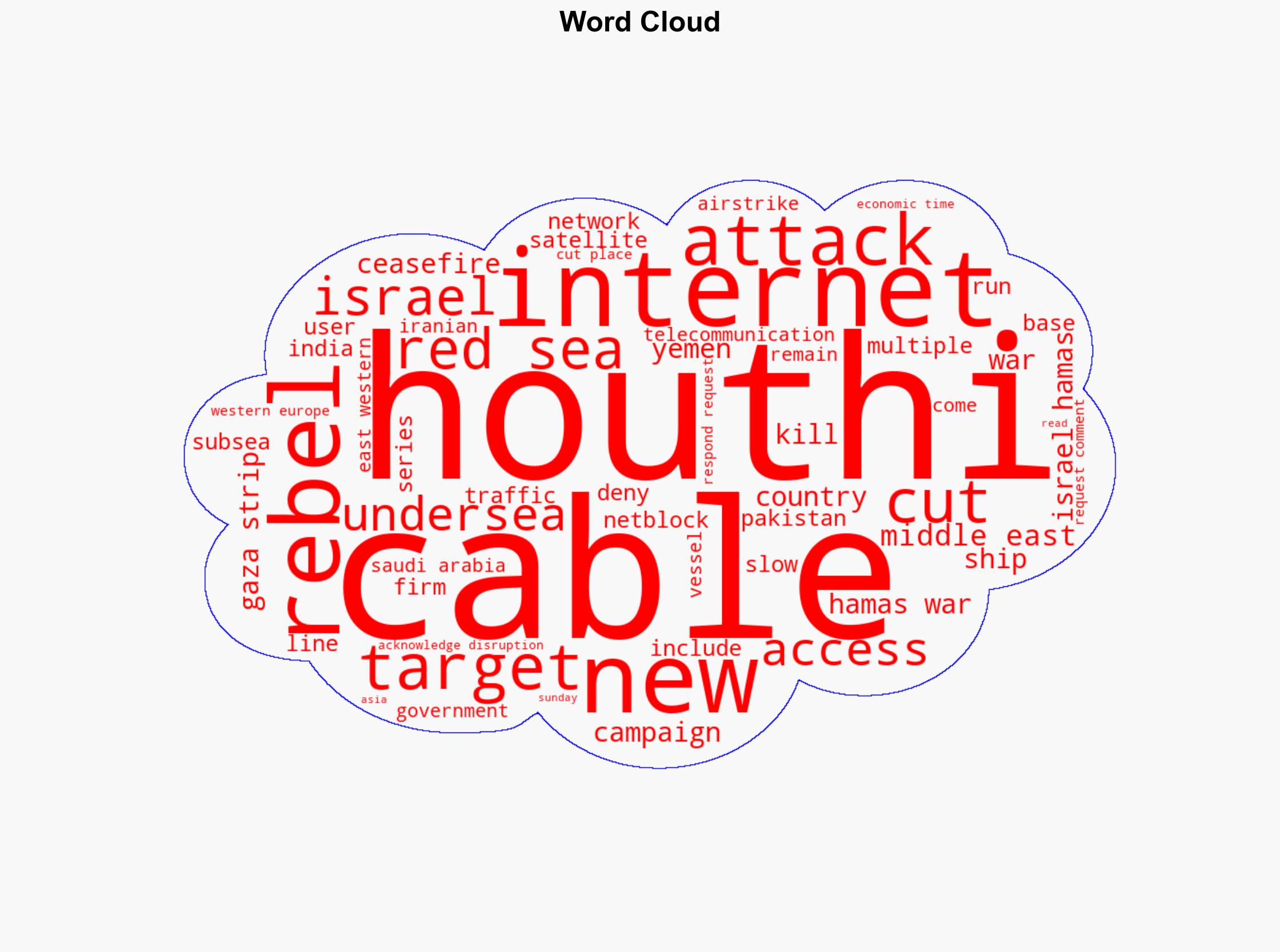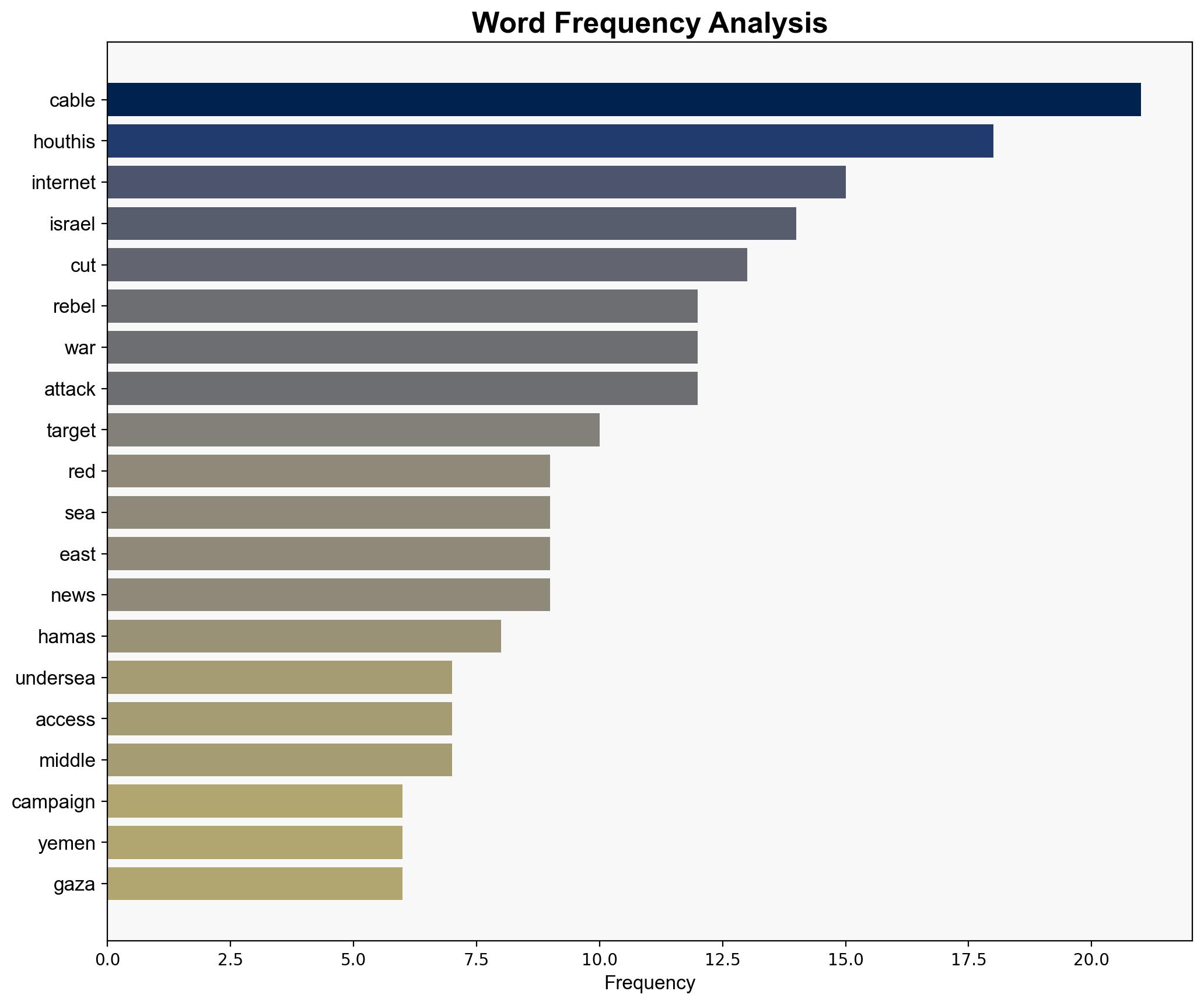Undersea cables cut in Red Sea disrupting internet access in Asia West Asia – The Times of India
Published on: 2025-09-07
Intelligence Report: Undersea cables cut in Red Sea disrupting internet access in Asia West Asia – The Times of India
1. BLUF (Bottom Line Up Front)
The most supported hypothesis is that the undersea cable disruption was an unintended consequence of maritime activities rather than a targeted attack by Houthi rebels. Confidence level: Moderate. Recommended action includes enhancing maritime monitoring and securing critical infrastructure to prevent future disruptions.
2. Competing Hypotheses
1. **Hypothesis A**: The cable cut was a deliberate act by Houthi rebels as part of a broader campaign to pressure Israel amid the ongoing conflict with Hamas. This aligns with previous Houthi actions targeting maritime assets.
2. **Hypothesis B**: The cable disruption was accidental, possibly caused by maritime activities such as anchor drops or fishing operations, and not a targeted attack. This is supported by the lack of direct evidence linking the Houthis to the incident and their denial of involvement.
Using Analysis of Competing Hypotheses (ACH), Hypothesis B is better supported due to the absence of direct claims of responsibility by the Houthis and the historical occurrence of accidental cable cuts in busy maritime regions.
3. Key Assumptions and Red Flags
– **Assumptions**: Hypothesis A assumes that the Houthis have the capability and intent to conduct such an attack without leaving evidence. Hypothesis B assumes that maritime activities in the Red Sea are frequent enough to cause accidental damage.
– **Red Flags**: The Houthis’ denial of involvement could be strategic deception. The lack of immediate evidence or claims of responsibility raises questions about the true cause.
– **Blind Spots**: Limited visibility into maritime activities in the Red Sea and potential underreporting of incidents due to geopolitical sensitivities.
4. Implications and Strategic Risks
– **Economic Impact**: Disruption of internet services can have significant economic repercussions for affected countries, impacting businesses and communications.
– **Cybersecurity Risks**: Increased latency and rerouting of internet traffic could expose vulnerabilities in regional cybersecurity infrastructure.
– **Geopolitical Tensions**: If linked to the Houthi-Israel conflict, this incident could escalate regional tensions and provoke retaliatory actions.
– **Psychological Impact**: Public perception of insecurity and vulnerability in critical infrastructure could undermine confidence in regional stability.
5. Recommendations and Outlook
- Enhance maritime surveillance and monitoring in the Red Sea to detect and prevent future disruptions.
- Strengthen international cooperation to secure undersea cable infrastructure and improve response capabilities.
- Scenario Projections:
- **Best Case**: Improved monitoring prevents future incidents, stabilizing internet connectivity and regional tensions.
- **Worst Case**: Continued disruptions lead to significant economic losses and escalate geopolitical conflicts.
- **Most Likely**: Incremental improvements in infrastructure security reduce the frequency of such incidents.
6. Key Individuals and Entities
– Houthi rebels
– Microsoft
– Tata Communications
– Alcatel Submarine Networks
7. Thematic Tags
national security threats, cybersecurity, counter-terrorism, regional focus




